While a bad fuel pump requires replacement, knowing how to start a car with a bad fuel pump will save you from being stranded on the road and buy some time to safely drive to the nearest mechanic. Your vehicle’s internal combustion engine needs a constant influx of fuel and air as inputs for the combustion.
Without a functional fuel pump to ensure correct fuel supply, your engine will face a number of problems, including difficult starting, engine surging, sputtering or stalling.
A bad fuel pump sound may not be all that important, however, you probably know that anything related to the performance of the complex, delicate engine would require your utmost attention.
It goes without saying that you will need to familiarize yourself with this component to always ensure optimal engine performance and to avoid troublesome, expensive repairs caused by a bad fuel pump.
In this comprehensive guide, learn how a fuel pump works, the symptoms of a bad fuel pump, and methods to fix weak fuel pump symptoms temporarily, which might well be a matter of survival.
Contents
What Does A Fuel Pump Do?
A fuel pump is an essential component of a car powered by an internal combustion engine.
Older motorcycle engines do not require any fuel pump at all because they have gravity feed fuel from the fuel tank or under high pressure to the fuel injection system.
While your engine needs air and fuel to be injected into the combustion chamber, fuel is stored in the fuel tank.
Therefore, a fuel pump, also referred to as a “fuel transfer pump”, is needed to transfer fuel from the fuel tank to the engine, specifically to the carburetors or fuel injectors, which disperse fuel into the combustion chambers of the engine.
Fuel pumps get the job done by combining mechanical or electrical forces with pressure. The pump may be mechanically worked by the engine or it may be electric, in which case it is usually next to or even inside the fuel tank.
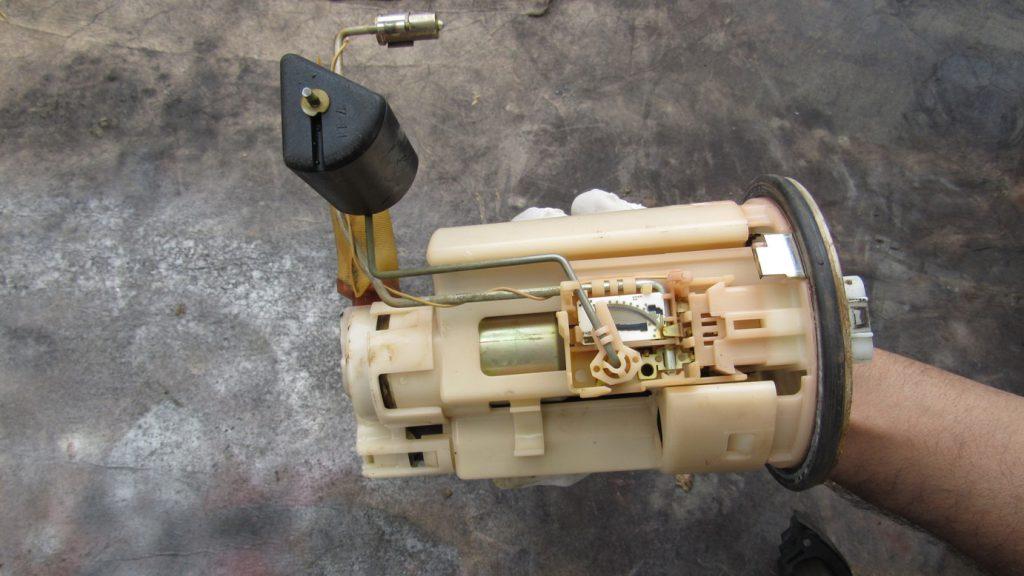
A fuel pump itself actually comprises several pumping systems inside the canister-shaped container, which is about the size of a small jelly jar. First, the fuel feed pump works like a vacuum to suck the gas or diesel in from the tank.
Then, the fuel is filtered through a mesh screen to block any tank residue, and is fed into a metering pump. Here, the plunger-like mechanisms push-pull, spin and jostle the fuel to achieve the required pressure.
Once the fuel has been pressurized to a precise level, it is pushed out of the pump, down through the fuel line.
From there, a tiny nozzle sprays a fine mist of fuel into the engine’s combustion chamber. This fuel mist is combined with air at a precise ratio, then ignited to create the combustion.
Where is the fuel pump located?
Carbureted engines often use low pressure mechanical fuel pumps that are mounted outside the fuel tank, whereas fuel injected engines often use electric fuel pumps that are mounted inside the fuel tank. Some fuel injected engines even have 2 fuel pumps: one low pressure/high volume supply to pump in the tank and one high pressure/low volume to pump on or near the engine.
Fuel pressure requires to be within certain specifications for the engine to run correctly. Specifically:
- If the fuel pressure is too high, the engine will run rough and rich. It will not combust all of the fuel being pumped and make the engine inefficient and a pollutant.
- If the pressure is too low, the engine will run lean, misfire, or stall.
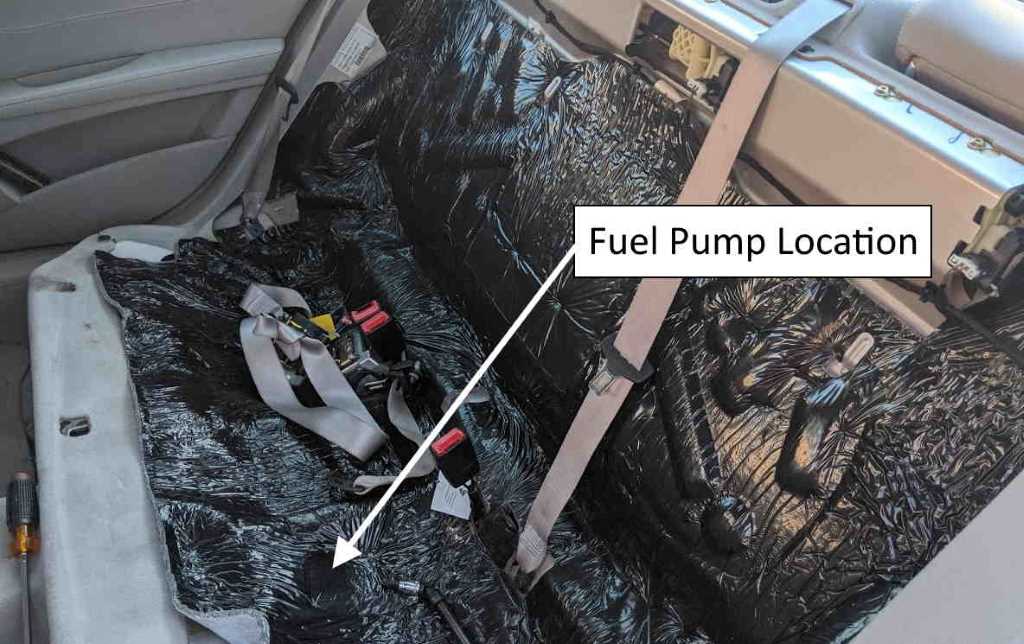
Symptoms of a Bad Fuel Pump
It goes without saying that when the fuel pump in car malfunctions, the engine will not get the correct amount of fuel at the right time, thus its performance will be impeded. Below are the most common fuel pump symptoms.
Difficulty Starting
Because fuel pumps constantly run whenever the ignition is turned on, they can eventually wear out and deteriorate over time. A bad fuel pump may still pump fuel, but the vehicle may experience difficulty starting from the lack of pressure.
A weakened fuel pump can cause the vehicle to take more cranks to start than normal, and in more serious cases may even cause the vehicle to require multiple turns of the key before it will start.
When a fuel pump completely malfunctions, fuel cannot reach the engine upon ignition. The engine therefore will crank and rev but never catch.
Before attempting to replace the pump, it is always a good idea to check for a blown fuse and/or low pressure in the fuel line.
READ MORE
- Learn 4 Basics To Diagnose An Engine That Won’t Start
- The Complete Guide To Starting Car In Cold Weather
Engine Stalling at High Temperature

Many problems can cause stalling, however when it happens frequently at high temperatures shown on the car’s thermometer, the likely culprit is the fuel pump motor.
If stalling continues to occur with an increasing temperature gauge, it could indicate the fuel pump’s deterioration and need for replacement.
Engine Sputtering
One of the surest indicators of a fuel pump bad is a sputtering engine at high speeds, because the fuel pump cannot provide a constant stream of fuel to the engine at the ideal pressure.
If you’re driving at a consistently high speed and the engine suddenly sputters before returning to normal operation, there are highly likely issues within the fuel pump. So if you are wondering can a fuel pump fail suddenly, the answer is always yes!
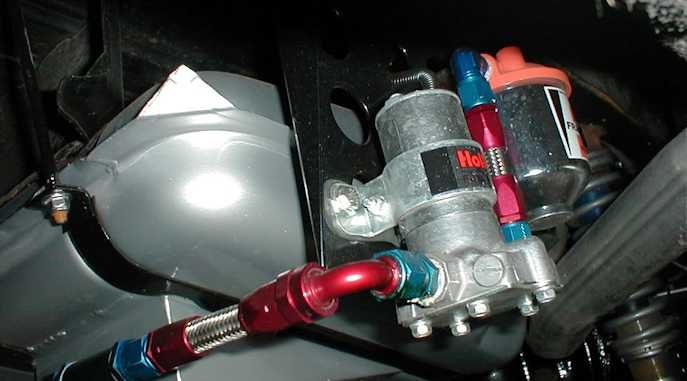
READ MORE
Engine Surging
If the pump is sending too much gas to the engine, this might lead to engine surging. While this symptom is commonly associated with fuel pump problems, it can also be a sign of bad gas.
To understand why this is the case, as well as other symptoms of the common engine surging problem, consult our comprehensive guide on Engine surging: How to troubleshoot & fix.
How To Start A Car With A Bad Fuel Pump
To begin with, we would strongly recommend taking the car to the mechanic to get the problem sorted completely. The best solution in the case of a faulty or bad fuel pump is to simply replace it.
Continuing using a bad fuel pump will damage your engine and result in expensive repairs. Always keep in mind that even pro tips on how to start a car with bad fuel pump are strictly fuel pump temporary fix, not solutions.
Most importantly, you must first check and confirm if your fuel pump is actually bad or not. There are a number of ways by which you can confirm yourself for having a bad fuel pump.
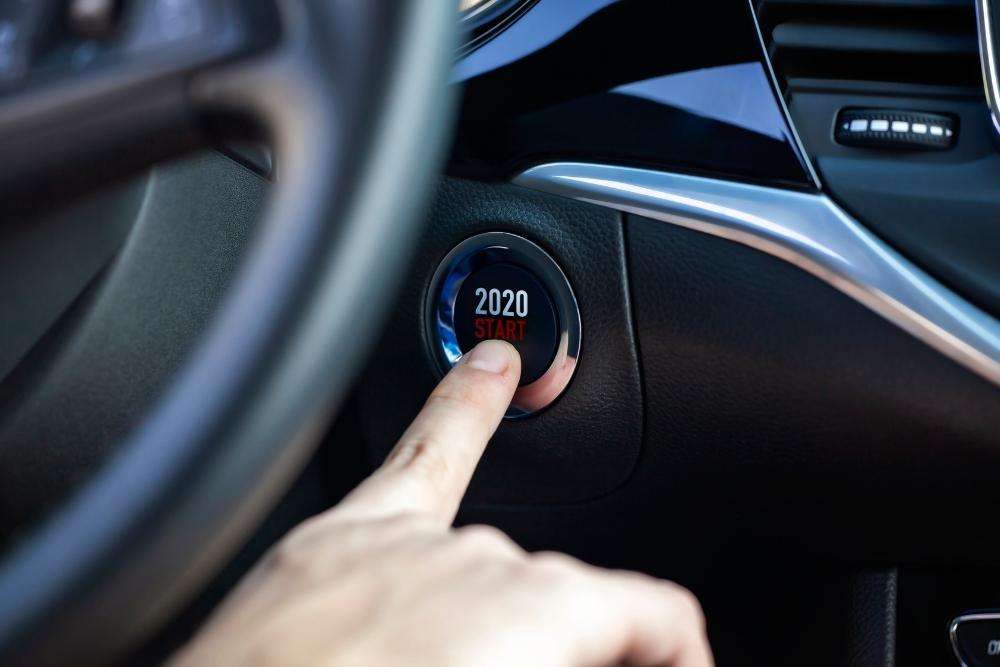
The basic indication of having a faulty fuel pump is the low pressure in the engine. A faulty fuel pump will lower the required pressure and will disturb the engine’s air-fuel ratio, which will surely hinder the car’s performance.
Running a car with a broken fuel pump will burn out the motor and cause expensive repairs. The overheating of the engine can also be one of the possible signs.
But you can still buy some time for driving your car to the nearest mechanic or your house despite the hassle. Below are some tips on how to start a car with a bad fuel pump:
1. Use Fuel Pressure Gauge
A fuel pressure gauge can be a great diagnostic tool for keeping an eye on your fuel system to ensure it is running at peak performance levels.
Fuel pressure gauges monitor the fuel pressure in your engine to prevent damage to your fuel pump and injectors.
This can be one of the best alternative solutions when you are concerned with the various ways to deal with a defective fuel pump to start your car.
Even the mechanics use this method when they are working on a bad fuel pump. Therefore, this method can be totally relied upon in case of a bad fuel pump.
All you need to do is to attach the fuel pressure gauge with your car’s engine. This will somehow let you start your car with a bad fuel pump along with giving an idea about the actual failing of the car’s engine.
READ MORE
2. Applying Some External Pressure
The next tip on how to start a car with a bad fuel pump is to apply some external pressure to the car.
The main problem with the car fuel pump is that it reduces the required pressure for the car’s operation and thus causes problems with its performance.
Thus, the best solution that you can try against your need to start your car is applying some external pressure. The external source of pressure may maintain the required pressure level for the car’s engine to perform.
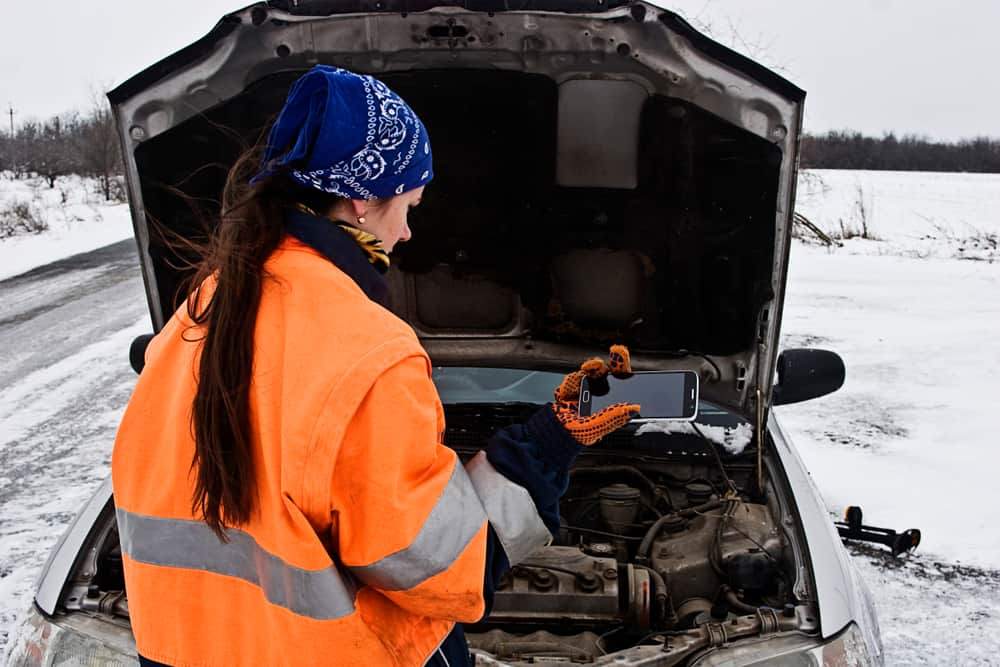
3. Maintaining The Engine’s Heat
Maintaining the heat in your car’s engine can also possibly be the solution for the need of starting your car with a bad fuel pump.
The main reason why your car starts, even with a failed fuel pump, is that once the car gets cool, the fuel pump resets itself without the required pressure and heat. This results in immediate malfunction and disrupts the car’s performance.
Thus, the best way to start a car with a bad fuel pump is to maintain a significant amount of heat in a car’s engine. This will reduce the frequent malfunction in the car along with stabilizing the car’s performance to the maximum.
SEE MORE :
- The Car Won’t Start Unless I Give It Gas: Diagnose The Issue!
- How To Start A Car With A Dead Battery Without Jumper Cables?
Again, it is not advisable to start a car or to look for possible ways for how to start a car with a bad fuel pump.
The fuel pump, if not taken care of, can bring a number of problems and side effects to the car. The possible side effects are:
- Deteriorated fuel economy
- Frequent engine failures
- Power loss
- Surging
- Engine sputtering
- The rise in temperature of the car’s engine
Thus, to avoid all these headaches, most of the automobile experts suggest avoiding using a car with a bad fuel pump. You can try the above-mentioned tricks to make your fuel pump work but the possible associated risks are considerably high.
Get your fuel pump repaired at the earliest to avoid troublesome and expensive repairs on your car and to enjoy optimal engine performance.
What Causes a Fuel Pump to Fail
Fuel pumps run continuously with the engine, and it delivers high pressure to the fuel rail as well as to the injectors. As the pump is always submerged in the fuel, it stays cool and thus stays functional.
If you frequently empty the tank all the way down before refilling it, the fuel pump is more exposed to overheating and thus it’s most likely that the fuel pump will die before its intended lifespan.
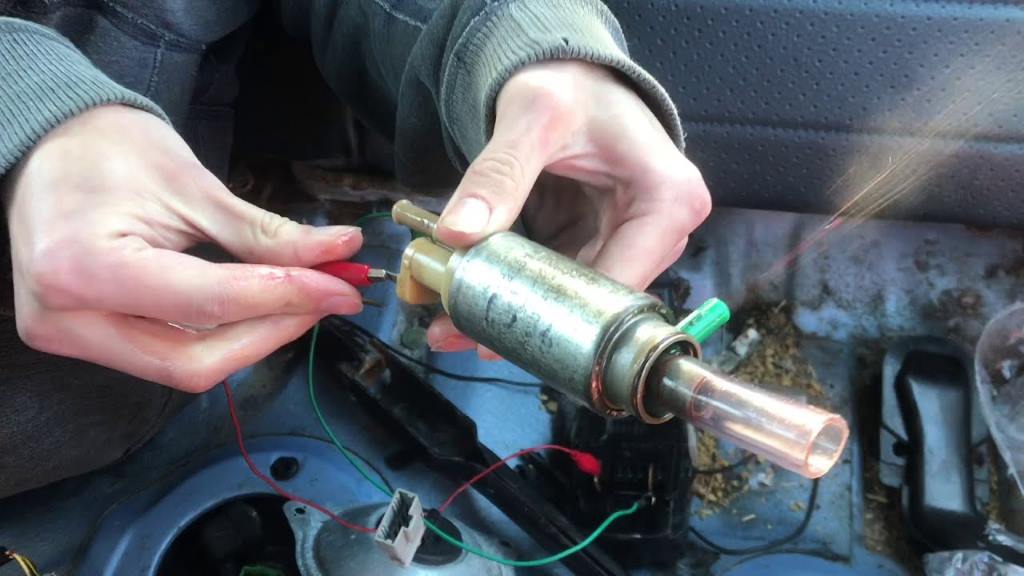
When you turn off the engine with a minimum fuel level, the fuel drains from the priming chamber connected to the fuel delivery system.
And when you start the engine, the pump gets hot and stays un-primed until you refill the chamber with fuel. If this happens regularly, it will burn the pump motor, causing the fuel pump to fail completely.
Maintenance Tips to Increase a Fuel Pump’s Lifespan
Preventing fuel pump failure is far less expensive than replacing the pump. Below are some methods that you should exercise consistently to increase the longevity of your fuel pump.
- Purchase high-quality fuel that is clean from debris. Such fuel will cause damage before the conventional inline fuel filter can remove the impurities. Using quality, name-brand fuel normally prevents many problems. Buying fuel only from high-volume stations also helps.
- Make sure you always keep the gas tank a quarter of the way full.
- Run scheduled maintenance for the fuel system and filters regularly. Repair or replace the fuel pump if necessary.
- Don’t empty the fuel tank. Otherwise, it will cause the tank to overheat and decrease the lifespan of the fuel pump.
- Do not purchase fuel while a tanker-truck is filling the station tanks. This can stir debris that has settled in the tanks.
If your car is showing any of these symptoms of a bad fuel pump, you will definitely want to inspect the fuel pump to determine whether or not it needs to be replaced, along with a few other possible culprits.
Check out this video from ChrisFix to learn how to figure out if your fuel pump is bad and then how to replace a fuel pump in your car or truck!
Knowing the state of your fuel pump and learning how to start a car with a bad fuel pump are essential maintenance tips to keep your vehicle in tip top shape.




I appreciate the information given in this article about the fuel pump in the performance of the vehicle. Fuel pump plays a key role in the performance of the engine by pumping the required amount of fuel to the internal combustion chamber of the engine. An abnormal fuel pump could not do so efficiently which may bring the vehicle to a halt. So, the condition of different components of the vehicle should be subjected to inspection and any signs which indicates that the fuel pump has some issues should be repaired immediately to ensure a continuous supply of the fuel to the engine.
Awesome!